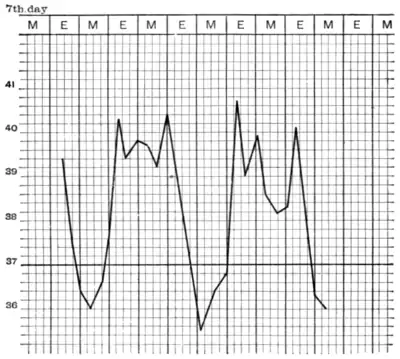III]
SUBTERTIAN INFECTION
69
by the "true crisis." This peculiar phenomenon the writers referred to attribute to the presence of two swarms of parasites, one of which matures somewhat later than the other. (Chart 4.)
The tendency to the development of pernicious symptoms, to the production of cachexia, and to relapse is similar to what appears to be the case in malignant quotidian infections.

Chart 4.—Subtertian infection.
Geographical distribution.—All these malignant parasites are confined to the warmer regions of the earth, and to the more intensely malarial districts in these; hence the name "tropical" which has been applied to this type of infection. In the sub-tropical zones they[1] occur as first infections only in late summer or early autumn; hence the name "æstivo-autumnal."
- ↑ This peculiarity as regards seasonal and geographical distribution of subtertian malaria may be explained, as Grassi, Jancsó, and others have pointed out, by the fact that for its development in the mosquito the subtertian parasite demands a higher